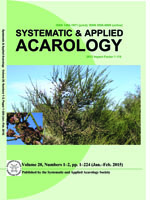All five species of kiwi (Apteryx spp.) are listed as threatened or near threatened, and an important aspect of kiwi conservation is understanding the biology of parasites because of their potential to act as disease vectors and hinder kiwi survival. Although the ectoparasite fauna on kiwis has been categorized, there is a paucity of information on the biology of the kiwi tick, Ixodes anatis, and other parasites found on this unusual avian host. Here we explore the presence of I. anatis in burrows known to be used by North Island brown kiwi, Apteryx mantelli. There was a significant positive correlation between the frequency with which burrows were used by kiwi and both tick intensity and prevalence. The potential consequences of extended use of burrows by kiwi for nesting and tick intensity are discussed. Monthly tick distributions for varying age/sex classes are described as well as age/sex class distribution in different burrow types, with other invertebrates found in burrows also noted. Given the conservation risk for kiwi and the endemic status of I. anatis, understanding the impact of this tick species on kiwi as well as its natural history should be a priority for future research.
How to translate text using browser tools
5 January 2015
The kiwi tick, Ixodes anatis Chilton, 1904 (Acari: Ixodidae): aspects of its biology and ecology
Rose J. Swift,
Allen C. G. Heath,
Sarah E. Jamieson
ACCESS THE FULL ARTICLE
Apteryx
ectoparasites
fleas
habitat
Ixodes anatis
mites
off-host aggregation





